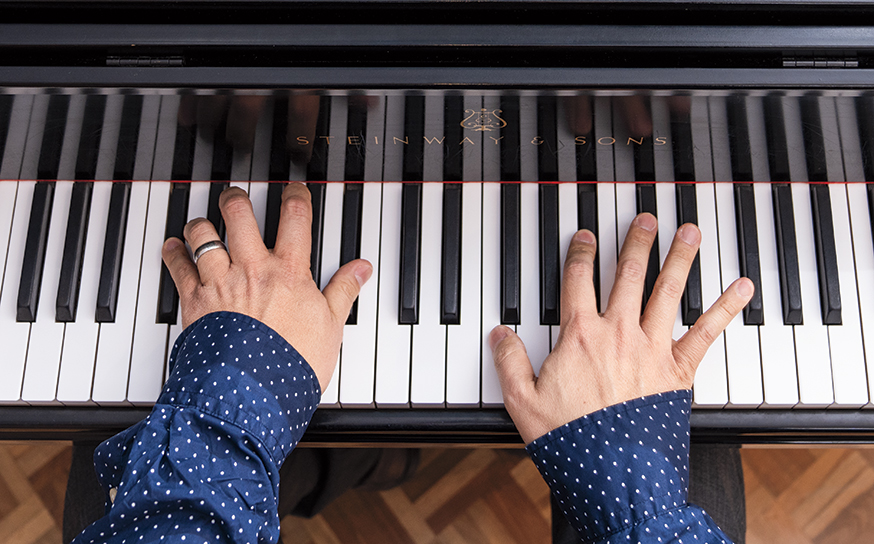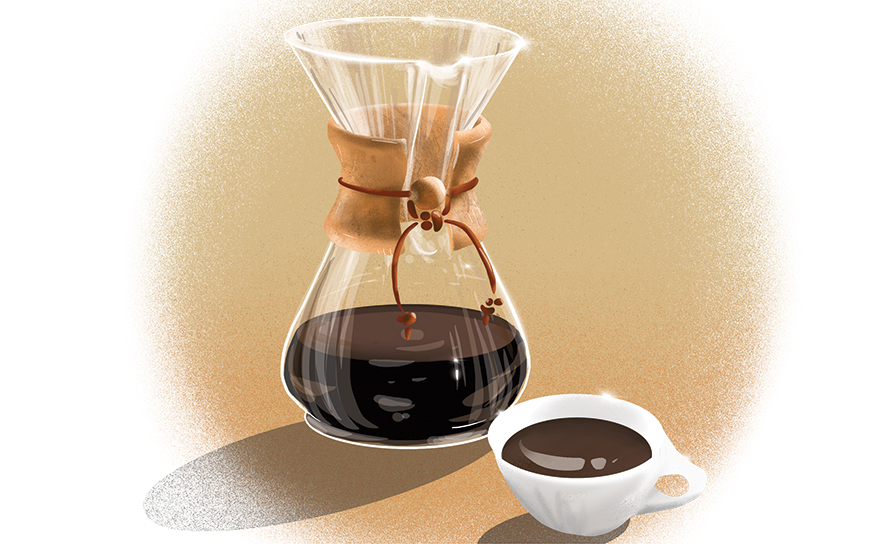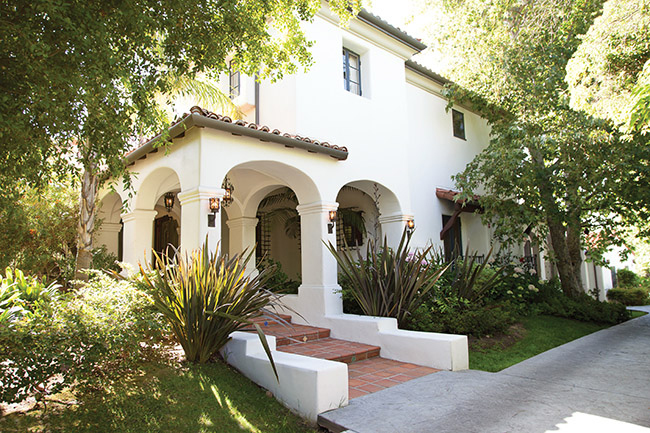
The Greatest Golfer (You’ve Never Heard Of)
For several years in the 1930s, he was the most successful golfer on the pro circuit, winning—sometimes consecutively—the most prestigious tournaments of the day. Then, suddenly, for Ralph Guldahl it was over. Here’s the captivating story of his unprecedented winning streak and the inside track on how—almost overnight—he lost his game, ultimately becoming Braemar Country Club’s most famous and beloved pro.
-
CategoryPeople
-
Written byWillard Simms

It was Sunday, June 12, 1937. As Ralph Guldahl stood on the green at Oakland Hills Country Club near Detroit, he looked on the cheering throngs with a sense of disbelief. Just two years earlier the 26-year-old had retired from tournament golf in frustration and gone to work as a car salesman. Yet now here he was, in the final round of the U.S. Open Championship, tied for the lead with Sam Snead—the man universally admired for having the greatest, most fluid swing in all of golf.
Guldahl was staring down a 65-foot putt across the treacherously fast eighth hole green that had already broken the back of several of his competitors. The only golfer in the tournament clad in a buttoned collar and necktie, he wiped his forehead under the heat of the summer sun, took three short practice swings … then backed away.
Snead was playing several holes ahead of him and scoring par after par. Guldahl took a deep, slow breath and decided to go all out. The strategy: putt hard, aiming for the center of the cup. It would be either eagle or bogey.
He stepped up, took one more deep breath, then addressed the ball with confidence. Sixty-five feet later it dropped into the cup. He’d taken the lead.
When he birdied the next hole it was too much for Snead to catch up, and Guldahl won the coveted U.S. Open. By all accounts it was part of one of the most brilliant runs of major tournament finishes in the history of professional golf.
And then, suddenly, he vanished.
SHOOTING STAR
At the time of that U.S. Open win, Guldahl stood in the limelight in a nation crazy about golf. The same age as fellow champions Snead, Ben Hogan and Byron Nelson, Guldahl shot to the top more quickly than any of them.
From 1936 to 1939, he was simply the biggest name in the game. He barnstormed to back-to back U.S. Open titles in ’37 and ’38 before being crowned Masters champion at Augusta National in 1939.
He also won three straight Western Opens, widely considered to be a major at the time. In the 30’s few Americans made the 12-hour flight across the Atlantic to play the British Open, but all the top pros played in The Western. When Guldahl did make the trip abroad, it was to play on the prestigious Ryder Cup team that gained a victory over the British in 1937. Guldahl’s mid-30’s roll made today’s world #1 Rory McIlroy’s current performance look mild in comparison.
On the course, Guldahl was always considered something of a contradiction in terms. He was known on tour as a no-airs, down-home Texan, and yet he always cut a striking figure. In an era when the knit golf shirt was just becoming popular, Guldahl always played in a starched shirt and tie. He looked as good as he played.
At that historic 1937 Open, when he approached the 18th green, he stopped, straightened his tie and took out his comb one final time. He later explained, “I wanted to look good when the photographers took pictures of me with the trophy. I was always proud of my head of hair.”
Friendly off the course, while playing he was stoic and rarely showed emotion. Few knew he was wearing a mask. “Behind my so-called poker face, I’m burning up,” he once said.
His son, Ralph, Jr.—a retired golf professional who now lives in Carson, California—has another take. “Dad took tournaments very seriously; that’s how he put money on the table for his family during the Depression,” he says.

THIRD-TIME CHARM After coming in second place two years in a row, in 1939 the always dapper Ralph Guldahl wins the Masters.
PHOTO COURTESY ASSOCIATED PRESS
PARALYSIS BY ANALYSIS
As brightly as Guldahl’s star shone at the end of the 30’s, it began to flicker and fade at the turn of the decade. Something had changed in that magical swing. Mastery of the game of golf is often illusive and over the years there have been many different theories about what exactly happened to Guldahl’s swing. The most popular one centers on a book.
In 1939 Guldahl was offered a contract to pen a guide to golfing. Groove Your Golf used the latest technique of high-speed photographs on each page, showing him hitting balls. As the story goes, when he studied the photographs of himself he saw a flaw in his swing, tried to correct it and lost his swing completely. What golfers commonly call “paralysis by analysis” was evident every time he stepped on the course after 1940.
That year Guldahl finished fifth in the Masters and 14th in the U.S. Open. In 1941 he was 14th in the Masters and 21st in the Open—respectable spots, but nowhere near where he was before writing his book. In 1942 he placed 21st in the Masters, but shortly thereafter the Open and all subsequent major tournaments were canceled for the duration of World War II. By all accounts, the white-hot career of Ralph Guldahl was over.
A DECLINE SEEN DIFFERENTLY
Ralph, Jr. believes that if alive today, his father would laugh at the theory that over-analysis was the sole cause of his professional downfall. He says there were several other factors that played a role.
“My father always said, ‘Either you’re a natural golfer or an artificial golfer,’” Ralph, Jr. explains. “A natural golfer has a natural swing and only makes modifications to it when necessary for a particular shot. The first aim of form is simplicity. An artificial golfer can copy the mechanics of a good swing, but it’s not natural to him—and that type of golfer will struggle on the Pro Tour.” According to his son, Guldahl believed he had a “natural” swing.
Guldahl’s wife, LaVerne, also played a role in his short-lived career as a pro. Junior tells the story: “When my mother was 11 years old, she saw her best friend die in a terrible plane crash. She’d gone to the airport to see her childhood friend off, and the plane crashed on takeoff—killing everyone on board. She never got over it and vowed never to fly herself.”
Since LaVerne always accompanied Ralph to tournaments, the couple only traveled in trains and cars. When he was on the Ryder Cup team that played in England, he refused to fly. Instead the couple went across the Atlantic on a German steamboat that took more than 10 days to cross.
Car travel was further complicated due to an ear injury. Junior says that when his father tried to enlist in World War II, he was rejected and classified as 4F because of a punctured eardrum he’d received as a child. Military physicians determined that shooting a rifle would be excruciating for him.
Traveling by car on rough, unpaved roads caused a rattling noise that was painful. “It was something that gave Dad headaches which would last for days,” recalls Ralph, Jr.
And so in 1942, when all the major tournaments were canceled due to the war and most of the pros were serving in the military, Guldahl stepped away from professional golf.

OFF COURSE Guldahl attempts to get a ball out of a rough spot, as spectators look on from above.
PHOTOS COURTESY BRAEMAR COUNTY CLUB
POST PRO
The war years were a tough time for the young golf pro. Guldahl was frustrated that he was physically unable to serve his country like his fellow golfers, and he left the game in a slump. He moved quietly to Chicago and became the pro at Medinah Country Club, where he followed fellow Golf Hall of Fame member Tommy Armour.
No major tournaments were held again until 1946. By that time Guldahl had lost almost all interest in the tour. His son says, “Dad could play lights-out golf when he wanted to, but the competitive drive just wasn’t there anymore. And he just hated traveling.”
Guldahl eventually moved to Florida, but when he was offered the chance to become a teaching pro and “golf emeritus” at the brand new Braemar Country Club in Tarzana, he jumped at it. He and LaVerne bought a small house in nearby Sherman Oaks.
Right from the start he relished his new role. “He was immensely popular with everyone,” club pro Mike Spayd shares. “He seemed genuinely interested in everyone. He was the club’s ambassador to new members and was a liaison between management and the men’s club. He was so gentle, so considerate of everyone.”
Ron Cherney, a member of Braemar when Guldahl was golfer emeritus, recalls, “He was very popular. Everyone wanted to be able to talk with him, and he made himself available to club members all the time.”
Known as “Goldie” at Braemar, he often spoke proudly about his family. Every Saturday, he and Ralph, Jr. would play 18 holes together. “Members really wanted to play with Dad, though he rarely gave advice—just taught by example. And his swing was as good as ever,” Junior remembers.
 Father and son were very close, and Senior often spoke of losing his passion for playing tournaments when Ralph, Jr. was a toddler. He explained to young Ralph, “Your mom and I didn’t like raising you out of a suitcase. Playing the tour isn’t much of a life for the father of a young son.”
Father and son were very close, and Senior often spoke of losing his passion for playing tournaments when Ralph, Jr. was a toddler. He explained to young Ralph, “Your mom and I didn’t like raising you out of a suitcase. Playing the tour isn’t much of a life for the father of a young son.”
So is it a tragedy that Ralph Guldahl left the professional golf tour for good in 1942, eventually becoming the top gun at Braemar Country Club for 28 years—right up to his passing in 1987? To the contrary.
There are many at Braemar who would say that was the greatest thing that ever happened to Ralph Guldahl, because he affected so many golfers—of all ages—with his humble style and positive example. He was without question the most popular pro the club has ever had—in spite of the fact that he never gave more than two or three actual lessons a day.
Instead, he preferred to teach on the course while shooting a round. He particularly loved assisting golfers who exhibited a “natural swing.” To this day, warm stories are told on the Braemar greens about Guldahl—his humble nature, love of the game and of his family.
As golf enthusiasts will tell you, one of the greatest things about the game is that, unlike most sports, you can play it in your later years. Guldahl did—and well.
At the age of 75, he shot 18 holes at Braemar while playing with some celebrities. Most often the former tournament pro didn’t keep score, but on that day the group did. The scorecard that day showed that Ralph Guldahl, in declining health and just three months before he died, shot even par at 71.











